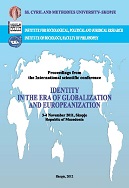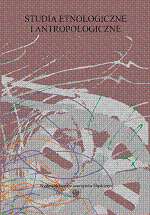
THE IMPACT OF THE CONTROVERSY AROUND THE IDENTITY OF THE RUDARI PEOPLE FROM A ROMANIAN VILLAGE UPON LOCAL SOCIAL LIFE
In a Romanian village, the majority, represented by Romanians, live together with the Rudari, people without a homogeneous group identity (some groups declare themselves as being Romanians, like in the case of the community I researched, others as being Roma/Gypsy persons). At local level, between Romanians and Rudari people seem to be no tensions, but, despite this first feeling, there are daily life practices which prove the separation between the two groups (for example, the avoidance of commensalism, of exogamy, or of burial in the same part of the cemetery). The main responsibility for all these separations is the Rudari’s dark skin, the Romanians avoiding to become close with a person who has a physical appearance similar to the one of the Roma/Gypsy people. More precisely, the last category of people has a darker skin, even though there are some exceptions. In those extreme situations mentioned above, a Rudari becomes a Gypsy person in the Romanians’ point of view. The skin color, in the case of Rudari, is a first element that can justify the tendency of the local population, observed in certain situations, of integrating the group of Rudari into the big category of Roma/Gypsy population. At the common sense level, people operate with this kind of appreciations. The Rudari come to be “perceived” as belonging to the same community with Gypsy, and for this reason are exposed, many times, to social exclusion.
More...
